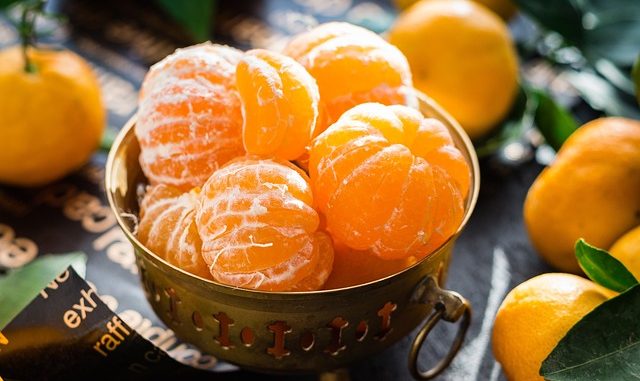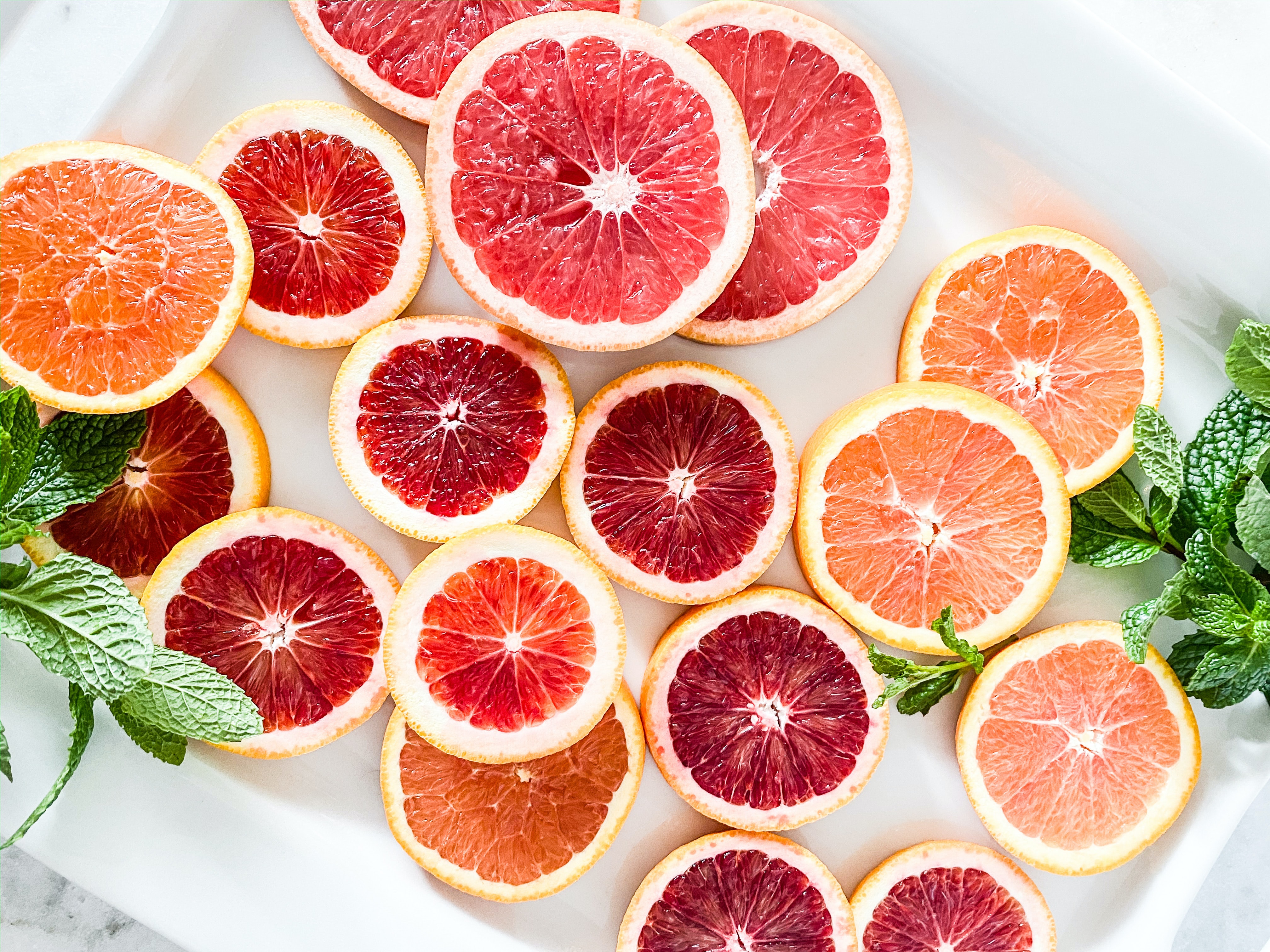
The Common Mandarin or Tangerine is now a highly popular dessert fruit with a strong commercial following throughout much of the world. The fruit has seen continual rise in consumption with strong global marketing. It has the name Citrus reticulata Blanco.
The flavour of the fruit is used in cosmetics, beverages, confectionary and other biscuits.
The mandarin fruit has a hollow core at maturity and the segments pull away easily from each other. This is one of the reasons why mandarins are starting to supersede oranges because they are easier to peel and still retain segments that have a high juice content. They are not as seedy as oranges but this is variable because some can have up to 25 seeds per fruit. There are cultivars such as Tankan and Satsuma, the latter is covered off separately.
Whilst the Satsuma receives most of the world’s attention, other varieties such as the Shatang have quietly garnered much appreciation for their sugary sweetness and nutrient quality. It has a better flavour than other citrus fruits (Zhang et al., 2014). This variety grows mainly in Guangdong Province in Southeast China where it covers 80% of the citrus groves. Another variety is ‘Nanfeng‘ and Sai-Namphaung. The latter variety is grown in Thailand.
The other older and traditional mandarins which we haven’t covered elsewhere are Cleopatra, Sunki, Huanglingmiao, Changsha, Dancy, Willowleaf and Ponkan. The more modern mandarins include W. Murcott, King and Wilking.
The Cleopatra is a small-fruited mandarin now treated as the species Citrus reshni. It is believed to have originated in India where it is called billi kichili or chota. It has poor tolerance to flooding. This mandarin has often been enrolled into breeding programs because it has a tolerance to salinity (Ream and Furr, 1976).
The Sunki was used historically as a rootstock in China and has considerable tolerance to blight.
Commercial Production of Mandarins
Japan’s main citrus harvest relies on mandarins and tangerines. The Unshu (Citrus unshiu) is the leading Japanese fruit, a type of satsuma mandarin. It was extensively planted in the 1960s but has been in continuous decline since 1974.
To prevent overproduction and a subsequent price drop, Japan’s Ministry of Agriculture, Forestry and Fisheries (MAFF) imposed Unshu production control in 1975. In response to subsequent supply shortages over several years, MAFF rescinded Unshu production control for the marketing year 2019–20.
The production of tangerines and mandarins in Japan for 2022 to 23 is forecast to be 921,000 metric tons (MT). This is down in production by 3.5% compared to the previous year. The Unshu is still expected to be the leading mandarin variety coming in at 722,000 MT whilst the non-Unshu varieties are forecast to be 199,000 MT. .
Quality Factors
The main quality factors have traditionally been drawn from orange and grapefruit as representatives of the genus (Goldenberg et al., 2017).
Most mandarins have a much shorter shelf-life than other citrus (Li et al., 2010; Papoutsis et al., 2019).
All citrus fruits are prone to fungal pathogens when stored. These are G. citri-aurantii, P. italicum, and P. digitatum. Their easy peeling nature also means they are more perishable than other citrus hence their shorter storage life (Tietel et al., 2011).
One disorder that affects mandarins is roughing disorder. It refers to unconformities in fruit size, pulp texture and peel thickness. It also leads to uneven thickness that causes poor mastication.
The Essential Oil
The chemical composition of C. reticulata peel oil has been established for many years using established analytical techniques (Minh Tu et al., 2002). In most cases the peel oils have been analysed using gas chromatography often linked to mass spectroscopy (GC-MS). In many cases the essential oils are extracted by cold-pressing methods.
The composition of the oil is significantly affected by the ripeness of fruits, vegetative stage of plant, storage condition and extraction method. The quality and odour of the oil are influenced by the limonene content which may vary in the different agro-climatic conditions (Dharmawan et al., 2007). As in most peel oils, hydrocarbons, followed by aldehydes and alcohols, are the most abundant compounds in peel oil and this is also the situation with the common mandarin.
A typical chemical composition of Citrus reticulata essential oil consists of:-
alpha-pinene, sabinene, myrcene, 1,8-cineole, limonene, nonanal, linalool, citronellal, nerol, carvone, geraniol and geranial, beta-caryophyllene and caryophyllene oxide.
Tangerine oil is easily distinguished from other citrus oils by its content of various aliphatic aldehydes (Minh Tu et al., 2002).
Many essential oils from a variety of citrus fruits can inhibit spore production and germination of various fungal pathogens (Mahanta et al. 2007).
Processing of Mandarins
The treatment of Satsuma mandarins has already been covered. Drying of the fruit has been explored by comparing conventional hot air drying, the use of osmotic dehydration and microwave drying (Therthai et al., 2011).
References
Dharmawan, J., Kasapis, S., Curran, P., & Johnson, J. R. (2007). Characterization of volatile compounds in selected citrus fruits from Asia. Part I: freshly-squeezed juice. Flavour and Fragrance Journal, 22, pp. 228–232
, , , , , & (2010). Fumigant activity of volatiles of Streptomyces globisporus JK-1 against Penicillium italicum on Citrus microcarpa. Postharvest Biology and Technology, 58(2), pp. 157–165
Mahanta, J. J., Chutia, M., Bordoloi, M., Pathak, M. G., Adhikary, R. K., & Sarma, T. C. (2007). Cymbopogon citratus L. essential oil as a potential antifungal agent against key weed moulds of Pleurotus spp. spawns. Flavour and Fragrance Journal, 22, pp. 525–530
Minh Tu, N. T., Thanh, L. X., Une, A., Ukeda, H., & Sawamura, M. (2002). Volatile constituents of Vietnamese pummelo, orange, tangerine and lime peel oils. Flavour Fragrance Journal, 17, pp. 169–174 (Article)
Njoroge, S. M., Mungal, H. N., Koaze, H., Phi, N. T. L., & Sawamura, M. (2006). Volatile constituents of mandarin Citrus reticulata Blanco peel oil from Burundi. Journal of Essential Oil Research, 18, pp. 659–662
, , , & (2019). Non-chemical treatments for preventing the postharvest fungal rotting of citrus caused by Penicillium digitatum (green mold) and Penicillium italicum (blue mold). Trends in Food Science & Technology, 86, pp. 479–491.
, , & (2010). Effect of sucrose and glycerol mixtures in the osmotic solution on characteristics of osmotically dehydrated mandarin cv. (Sai-Namphaung). International Journal of Food Science and Technology, 45, pp. 1918–1924
, , , , & (2011) Taste and aroma of fresh and stored mandarins. Journal of the Science of Food and Agriculture, 91, pp. 14–23 (Article)
, , , & (2014). Effects of Co-60 gamma-irradiation and refrigerated storage on the quality of Shatang mandarin. Food Science and Human Wellness, 3(1), pp. 9–15 (Article).

Leave a Reply